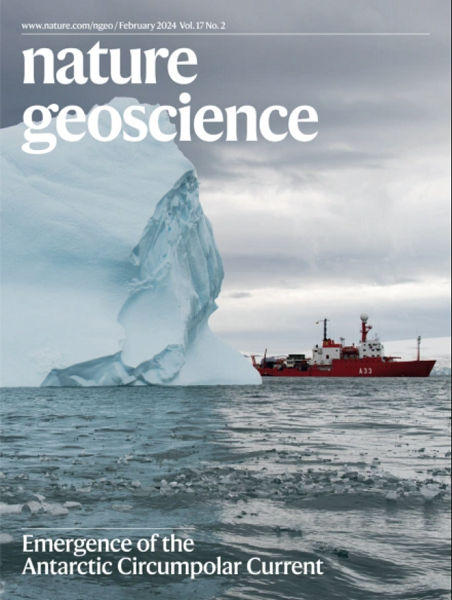海水-岩浆相互作用导致2022年Hunga火山喷发的低硫排放
IF 16.1
1区 地球科学
Q1 GEOSCIENCES, MULTIDISCIPLINARY
引用次数: 0
摘要
2022年1月汤加的Hunga海底火山爆发向高层大气注入了前所未有的水量,造成了广泛的气候影响。然而,与其他类似规模的喷发相比,它喷射出的硫异常少。我们用从喷发期间的火山灰样本中计算出的不稳定预算来解释缺失的硫。研究表明,岩浆储存在2.1 km ~ 5.6 km深度的弱层状储层中。岩浆在3分钟内上升,并在海平面以下400 - 1000米处破碎。这保留了微尺度的化学混合,包括~1 wt%的岩浆水浓度对比。11 h喷发共释放岩浆水319 Tg,占岩浆-海水相互作用产生岩浆水的10%。对比岩浆和残余玻璃硫浓度显示,总释放量为9.4 TgS,但其中93%是在海底岩浆破碎过程中进入海洋的。这些结果引起了人们的关注,即卫星SO2监测低估了海底爆炸的岩浆输出,并且它们可能在冰芯记录中几乎是不可见的,尽管它们的气候影响是由上层大气中的水注入引起的。本文章由计算机程序翻译,如有差异,请以英文原文为准。


Low sulfur emissions from 2022 Hunga eruption due to seawater–magma interactions
The explosive January 2022 Hunga submarine eruption in Tonga injected unprecedented water volumes into the upper atmosphere, generating widespread climatic impacts. However, it ejected anomalously little sulfur compared with other eruptions of similar volume. We explain the missing sulfur with volatile budgets calculated from volcanic ash samples spanning the eruption. We show that magma was stored in a weakly stratified reservoir at 2.1 km to >5.6 km depth. Magma rose within <3 min and fragmented at 400–1,000 m below sea level. This preserves microscale chemical mingling including ~1 wt% contrasts in magmatic water concentrations. The 11-h eruption released a total of 319 Tg of magmatic water, which is <10% of that derived from magmatic seawater interaction. Comparing magmatic and residual glass sulfur concentrations shows a total release of 9.4 TgS, but >93% of this entered the ocean during submarine magma fragmentation. These results raise the concern that satellite SO2 monitoring underestimates the magma output of submarine explosions and they are probably near invisible in ice-core records, despite their climate influence caused by water injection into the upper atmosphere. Little sulfur from the 2022 Hunga submarine eruption reached the atmosphere due to seawater–magma interactions, indicating that the climate impact of this type of eruption may be underestimated, according to analysis of ash collected throughout the event.
求助全文
通过发布文献求助,成功后即可免费获取论文全文。
去求助
来源期刊

Nature Geoscience
地学-地球科学综合
CiteScore
26.70
自引率
1.60%
发文量
187
审稿时长
3.3 months
期刊介绍:
Nature Geoscience is a monthly interdisciplinary journal that gathers top-tier research spanning Earth Sciences and related fields.
The journal covers all geoscience disciplines, including fieldwork, modeling, and theoretical studies.
Topics include atmospheric science, biogeochemistry, climate science, geobiology, geochemistry, geoinformatics, remote sensing, geology, geomagnetism, paleomagnetism, geomorphology, geophysics, glaciology, hydrology, limnology, mineralogy, oceanography, paleontology, paleoclimatology, paleoceanography, petrology, planetary science, seismology, space physics, tectonics, and volcanology.
Nature Geoscience upholds its commitment to publishing significant, high-quality Earth Sciences research through fair, rapid, and rigorous peer review, overseen by a team of full-time professional editors.
 求助内容:
求助内容: 应助结果提醒方式:
应助结果提醒方式:


